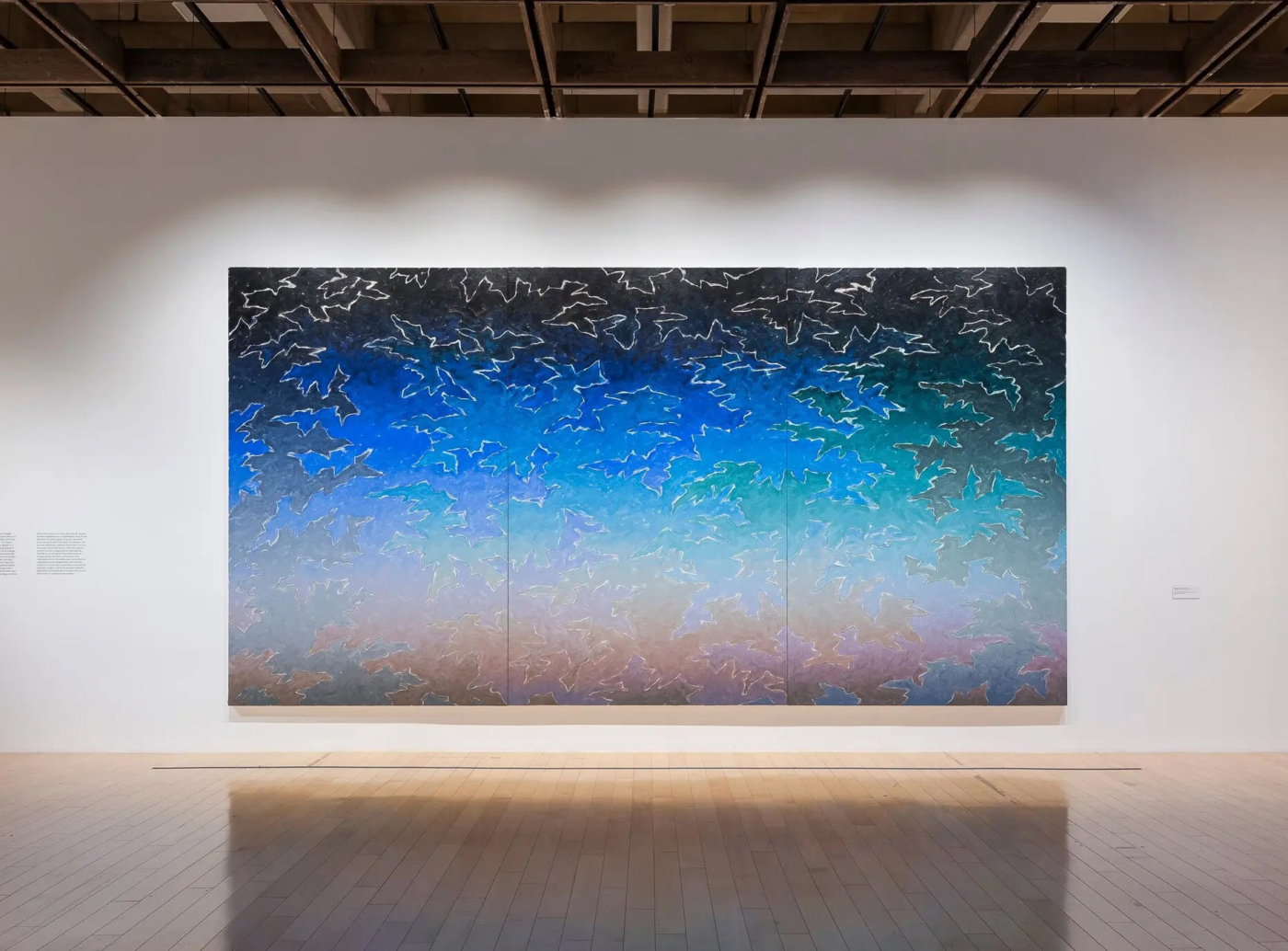
March 14, 2024
Download as PDF
View on The New York Times
Aesthetically, Los Angeles is mostly a mess. Unplanned, mismatched buildings sprout like fungus among the grid of its streets, whose orderly classicism is often disrupted by tectonically induced hills. Curbs crumble and sidewalks crack beneath telegraph poles festooned with cables. Flamboyant succulents mingle with scrubby native plants.
What aesthetic perfection Los Angeles offers is mainly in its skies. Breathtaking ombres of color ascend from the horizon, even outside its “golden hour” — the famously lambent period before sunset — even without the haze that amplifies these atmospheric special effects.
In the 1960s, many of this region’s most celebrated artists were inspired by the vault of the heavens, rather than the gritty realities on the streets beneath. They favored new media, technologies often developed by the local aerospace industry. Traditional paint on canvas was often sidelined in favor of modern industrial materials such as poured resin, ground glass, lacquers and microfilm coatings.
The artist Norman Zammitt, a colorist who excelled as a painter, remains less well known than his peers in the Light and Space movement. (The artist died in 2007.) Finally, a survey exhibition of Zammitt’s art at the Palm Springs Art Museum is taking visitors on a glorious tour through his chromatic investigations.
Born in 1931 in Toronto, Zammitt moved to Southern California as a teenager. In the 1960s, he experimented with making fashionably minimalist sculptures from acrylic resin and plexiglass, but hit his stride the following decade with paintings on canvas in what became his signature style: horizontal bands of acrylic color, shifting incrementally through shades both sickly and sublime.
This exhibition, titled “Gradations” and curated by Sharrissa Iqbal, starts good and gets better. Between entrance walls painted sunflower yellow, Zammitt’s panoramic painting “One,” from 1973, greets visitors. From a distance, the painting seems mostly yellow too. But as you draw near, you’ll identify colors from inky black, along the bottom, rising through dioxazine purple, cerise, coral, orange, then five or six different tones of yellow, in widening bands. Up close, the painting, 16 feet wide, bathes you in radiant luminosity.
“One” is Zammitt’s first large-scale iteration of what he would call his “Band Paintings.” Turn around in the gallery and you’ll see two more, both painted in 1975: “Green One” — which recalls the subaquatic rather than the aerial — and “Arctic Yellow.” As time went by, the bands became thinner, the colors became more subtly gradated, Zammitt’s surfaces more pristine and his effects more ecstatic.
Zammitt applied himself to his work with a lab technician’s precision. According to a wall text, by the mid-1970s he’d developed a “complex mathematical system” for mixing his colors, weighing out pigments according to curves on a graph. When I asked, Iqbal was unable to fully elucidate this process, although she did reveal that during the 1980s Zammitt began working with mathematicians at the California Institute of Technology who showed him how computers could help him develop more complex variables for his color charts. When desktop computers became affordable, he bought one and commissioned a custom program that enabled him to formulate gradations of colors.
Running down either side of the gallery are rows of smaller paintings, many just eight or nine inches wide, that seem to serve as studies for his larger works. Hanging near most of the mighty paintings are their mini-me companions. An exhibition of these small canvases — exquisite objects in themselves — recently opened at Karma in Los Angeles, and that gallery is credited, along with Zammitt’s estate, with supplying most of the works for this show.
The sky wasn’t Zammitt’s only visual reference. One especially dazzling painting from 1976, “North Wall,” achieves holograph illusions of depth, its horizontal bands pulsating before our eyes. It brings to mind Mexican serape blankets, or Native American weavings. Though he seldom advertised it, Zammitt’s mother was from the Mohawk Nation and the family spent time living on the Kahnawake Mohawk Territory, a First Nations reserve near Montreal before moving to California.
Iqbal conjectures that Zammitt’s Native American heritage may have led him to view abstraction as a path toward spiritual transcendence. The artist himself remained largely mute on the subject. An early laminated acrylic sculpture, its layers sandwiching optically dazzling layers of rainbow dots, is titled “Caugnawaga II” — an alternative spelling of the reserve where Zammitt once lived — but the piece itself bears no overt relevance to Mohawk culture.
The exhibition contains an unexpected plot twist: In the late 1980s, Zammitt’s razor-straight lines and flat color disintegrated in what he called “Fractal” paintings. A spectacular example of this style is the latest work in the show: “Triptych XI,” painted in 1992. It is an extraordinarily complex painting, an interlocking jigsaw of jagged forms, perhaps inspired by a coastline or cloudscape, loosely painted in dusky shades that ascend into blackness.
Why is Zammitt emerging from relative obscurity only now, in this artistic moment of generative A.I. and arcana, social activism and breakfast-table still lifes? Perhaps Zammitt’s art strikes a chord because it transcends its historical period — and ours, too. Not only do his paintings look as fresh as they must have when new, but they lift us out of our vexed and messy present, connecting us with the eternal.



